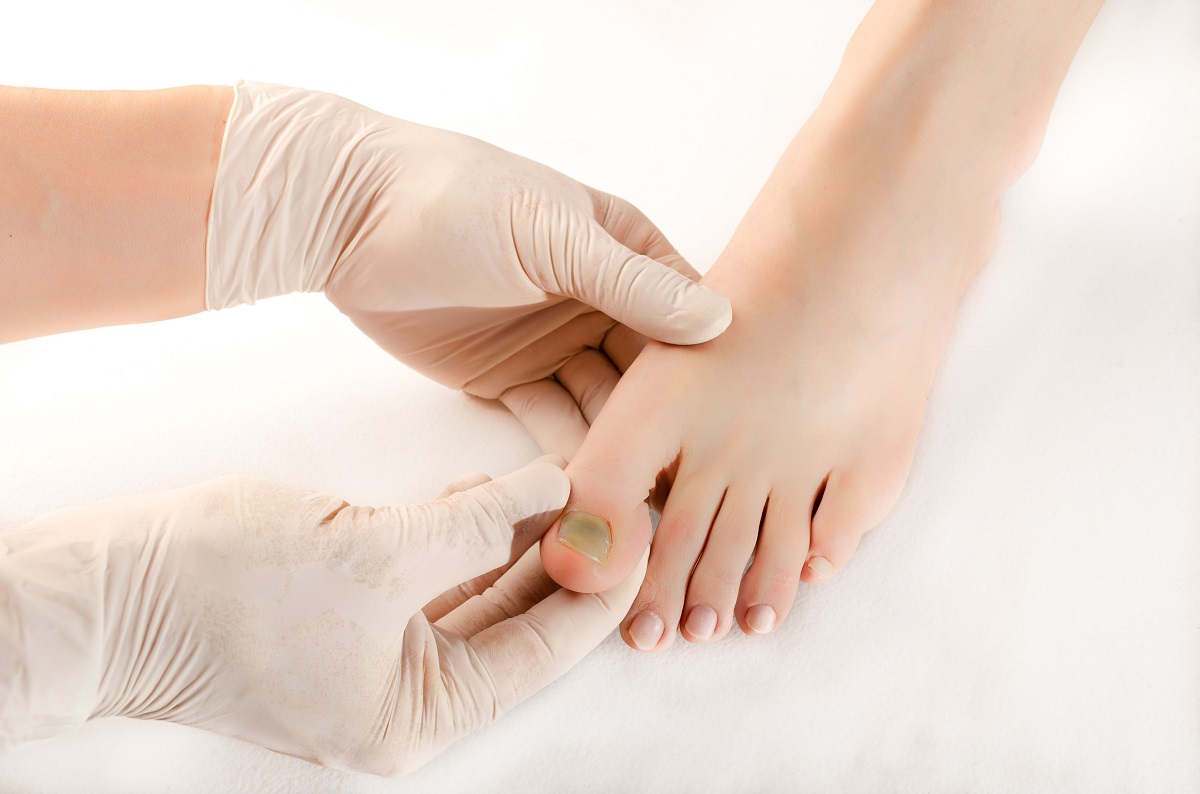A common fungal infection of the nail that causes brown, white, or yellow spots under the tip of the fingernail or toenail is called nail fungus. Discoloration and thickening of the nail may happen when the condition advances. This infection may negatively affect either one or more nails.
Commonly, treatment is not needed if you experience a mild nail fungus and it does not interact with daily activities. If the infection causes pain and thickened nails, people require treatment that includes medicines and other procedures. However, nail fungus treatments do not ensure the infection will not return.
Sometimes, this condition is called onychomycosis and when the infection impacts the region between the feet skin and toes, it is called athlete’s foot (tinea pedis).
Symptoms
People who develop a fungal infection of the nails may experience the following symptoms. For example:
- Nail thickening and discoloration
- The nails may appear separated from the nail bed or may be crumbly, brittle, or ragged
- Misshapen or smelly nails
While infection may affect fingernails, in most cases it impacts toenails.
It is advised to visit a doctor if home remedies and self-care do not help with the infection. Make an appointment with your doctor if you have diabetes and think you developed nail fungus, bleeding around nails, swelling and pain that happens near the nails, or walking problems.
Causes
Commonly, the condition occurs due to multiple fungal organisms (fungi) called dermatophytes. However, yeast, molds, and bacteria also can cause nail infections but nail discoloration caused by bacteria in most cases is green or black.
Sometimes, fungal infections of the foot (such as athlete’s foot) can spread to the nail and vice versa, nail infections may spread to the foot. People may also get the infection from direct contact with certain spaces where fungi can thrive including the floor tile in a gym or inside sweaty or moist shoes.
Risk Factors
The following factors may increase your risk of developing nail fungus. Examples include:
- Older people are more likely to develop this infection
- Those who wear shoes that make your feet sweat are at increased risk
- Previous athlete’s foot
- A higher risk of getting nail fungus is in people who walk barefoot in public areas including swimming pools, gyms, and shower rooms.
- Skin or nail injuries
- Diseases of the skin that negatively affect the skin (such as psoriasis)
- Certain health conditions (such as weakened immunity, blood flow issues, diabetes, and others)
What Are The Possible Complications of Nail Fungus?
In mild cases, people do not experience complications but if you experience a severe form of nail fungus it may lead to severe pain and permanent nail damage. Furthermore, the infection may spread to other body parts causing serious infections, especially if you have a weakened immune system. Commonly, the immune system becomes weakened due to certain medicines (such as chemotherapy drugs), diabetes, and other diseases.
How to Prevent Nail Fungus?
Check below some tips that may help prevent or avoid nail fungus:
- Wash your hands and feet regularly and keep them dry because it helps reduce the risk of getting fungi. You can also apply a nail hardener to strengthen cuticles and nails.
- Cut the nails straight across and remove thickened areas. Moreover, disinfect the nail clippers each time after use. Long nails make more place for the fungus to grow.
- Wear absorbent socks or change them throughout the day.
- It is recommended to get rid of old shoes or you should treat them with disinfectants or antifungal powders.
- If you are going in public areas (such as swimming pools) you should wear footwear.
- Regularly disinfect tools for home pedicures or choose a nail salon that uses sterilized tools for each customer.
- Do not use nail polish and artificial nails
- Manage your existing skin conditions (such as athlete’s foot)
Diagnosis
Usually, to diagnose the condition, doctors will examine the nails and thereafter may take some nail clippings or scrape debris from the nail and send it to the laboratory for testing. It may help determine the cause of the symptoms.
However, other diseases (such as psoriasis) may cause symptoms similar to nail fungus. Determining the exact cause of the symptoms, doctors may prescribe the best treatment for you.
Treatment
Some people do not need treatment for nail fungus and it goes away with self-care measures and over-the-counter (OTC) products. You should visit a doctor if the infection does not improve. However, treatment options for people with nail fungus are different because it depends on the severity of the infection, your age, existing health problems, and other factors. Check below some treatments usually recommended by doctors for people with this infection type:
Medications
Antifungal medicines that are often prescribed by doctors include oral pills and creams. Check below some examples:
- Oral antifungal medicines – These medications are usually the primary treatment for people with nail fungus. They usually prescribe Itraconazole to help a new nail grow and get rid of the infection. Commonly, the duration of the treatment is between 6-12 weeks but if you do not notice improvements or nails do not grow completely, you should visit a doctor immediately. Possible side effects include rash and liver damage. In addition, these medicines are less effective in people over 65 years old and cannot be used by those who suffer from liver disease or congestive heart failure.
- Medical nail polish – Doctors may prescribe a medicine called Ciclopirox. This is an antifungal nail polish that helps clean the infection.
- Antifungal nail cream – In some cases, you may need antifungal creams. Physicians usually recommend creams that contain Efinaconazole or Tavaborole. A common adverse reaction that occurs after using antifungal creams is rash.
Surgery
This is the most effective procedure against nail fungus but it involves permanent removal of the nail and its root.
Frequently Asked Questions
What are the primary symptoms of nail fungus?
These include:
- Discoloration and thickening of the nails
- The nail may become crumbly or brittle
- Pain or discomfort
- The nails may also smell
If any of the previous symptoms happen, do not hesitate to visit a doctor.
What is the most common cause of nail fungus?
People usually get this infection if the nails are frequently moist or when wear sweaty socks and shoes. However, it may happen due to other causes too.
What are the possible complications of nail fungus?
Some complications may occur in people with nail fungus, especially if they do not get treatment. Examples include:
- Other infections
- Permanent nail damage
- Nail deformity or separation
- Bacterial skin infections
- Systemic infections
Immediately visit a doctor if any of the complications listed above occur. If you have additional questions, ask your healthcare provider.




